🗂️ Download Now
Please fill out the Download Section below the Comment Section to download the Excel files!
*This article presents the applicability of structural elastomeric bearings for bridges, the calculation of their stiffnesses (including a downloadable spreadsheet), and some tips for appropriate numerical modeling.
1. Why Elastomeric Bearings?
In the beginning, bridges have been built with materials like stone or timber. The nature of those structures made it possible to place them directly into the supporting elements or even the soil itself. Furthermore, there was not the awareness and knowledge about structural seismic performance that we have today. With new and specialized materials and the need to protect structures from events like earthquakes, structural bearings have begun, and there are currently many options for different types of bridges.
Of all structural bearings, elastomeric bearings are frequently used elements to support concrete superstructures and transmit the loads to the substructures. This type of bearing has also shown adequate behavior in other types of materials and types of structures.
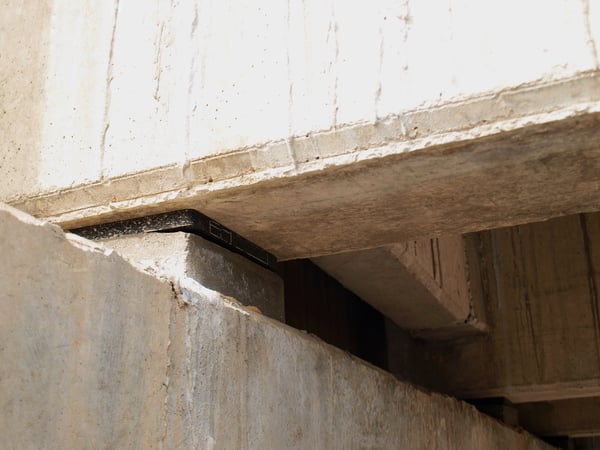
The design of elastomeric bearings deals with the equilibrium between having sufficient stiffness that can withstand the imposed vertical loads and enough flexibility to allow for the expected deformations. The stiffness and flexibility requirements are well enhanced with the use of steel plates and rubber, respectively. Then, elastomeric bearings can either be plain or reinforced with internal steel plates.
 Figure 2. Plain (left) and reinforced (right) elastomeric bearing pads (Dacheng Rubber Co., Ltd. catalog)
Figure 2. Plain (left) and reinforced (right) elastomeric bearing pads (Dacheng Rubber Co., Ltd. catalog)
As reference values for proper use, reinforced elastomeric bearings can usually be used for (vertical) loads up to 3500 kN, translations up to 100 mm, rotations up to 0,04 radians (for typical bending behavior), and have a low initial and maintenance cost (AISI and NSBA, 1996).
2. The Need for Including Elastomeric Bearings in the Structural Model
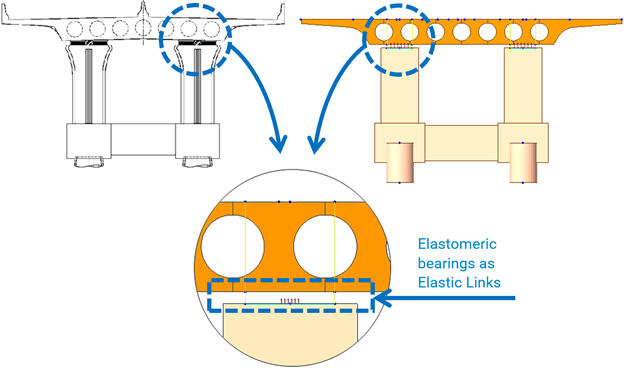 Figure 3. Bridge support drawing and structural model in MIDAS CIVIL
Figure 3. Bridge support drawing and structural model in MIDAS CIVILIn terms of the required information for design, it makes perfect sense that we need to calculate the expected deformations of the bearing because they are related to stiffness/flexibility, as stated before. Thanks to the advanced computer software for structural analysis and design of bridges, such as MIDAS CIVIL, it is advisable to include the stiffness of the bearings in the finite element model to ease up the iteration process and take advantage of the design capabilities.
For bridges where the structural analysis must include both the superstructure and substructure, the inclusion of the bearing properties is natural. The model is usually employed for seismic analysis, where the flexibilization effect of the elastomers (whether they are or not dampers) is beneficial for the reduction of seismic force to be resisted by the substructure especially if the bridge supports are rigid. A helpful comparison of a real bridge modeled with and without elastomeric bearings by Akogul and Celik (2008) proved this effect and even found that it may not be beneficial for cases where supports have low lateral stiffness compared to the bearings.
An additional reason to include the bearing's stiffnesses in the model is that the program's displacements can be used to define the expansion joint sizes.
3. Stiffness of Elastomeric Bearings
One can quickly determine stiffness expressions for the elastomeric bearings with the help of Solid Mechanics. Still, there are variables where we do not have analytical expressions yet, primarily due to the inherent nonlinear behavior of the rubber. Still, some empirical relations have proven to be accurate for bridge design.
International codes usually have design methods that include those factors, and the stiffnesses can be derived. The following are references to the clauses of some of those international codes:
- AASHTO LRFD bridge design specifications (2017): 14.7.5 and 14.7.6
- European Standard EN 1337-3:2005
- Australian Standard AS 5100.4:2017
From the previous, the only standard that explicitly includes the expressions for the elastomeric bearing stiffnesses is the Australian standard (clause 12.7). The expressions shown in this article for rectangular bearings are from this code.
..png?width=600&name=Figure%204.%20Strains%20in%20a%20Steel%20Reinforced%20Elastomeric%20Bearing%20(AISI%20and%20NSBA%2c%201996)..png) Figure 4. Strains in a Steel Reinforced Elastomeric Bearing (AISI and NSBA, 1996)
Figure 4. Strains in a Steel Reinforced Elastomeric Bearing (AISI and NSBA, 1996)
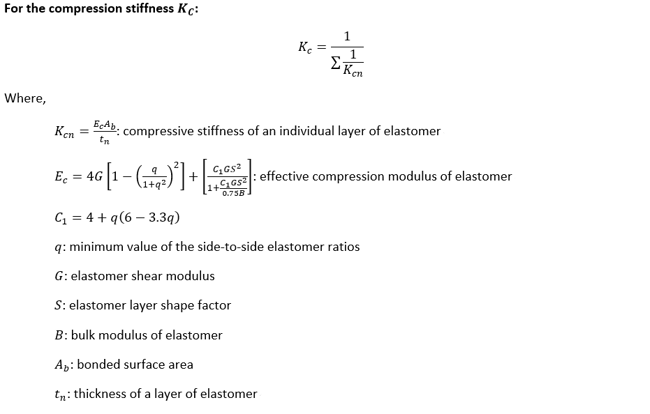 Compression stiffness equation
Compression stiffness equation
 Shear stiffness equation
Shear stiffness equation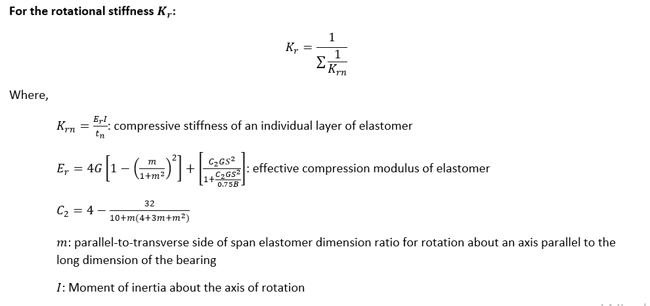 Rotational stiffness equation
Rotational stiffness equationThe reader can download a spreadsheet for the calculation of the stiffnesses of a plain or reinforced elastomeric bearing in Excel format that uses the previous calculations. A bearing becomes plain when the number of steel plate layers is zero. Please look under the DOWNLOAD section below.
4. Tips for Modeling of Elastomeric Bearings for Bridges
Here is a list of tips for the appropriate modeling of elastomeric bearings for bridges:
- Use the right type of element for the numerical representation. In MIDAS CIVIL, you can use the Elastic Link:
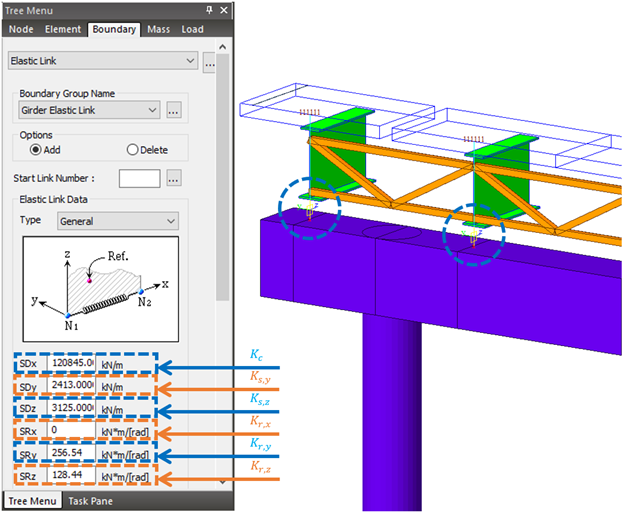 Figure 5. Elastomeric bearing stiffness input in MIDAS CIVIL according to this article's variables
Figure 5. Elastomeric bearing stiffness input in MIDAS CIVIL according to this article's variables
- Localize the elastomer element in a realistic position in the numeric model. Other approaches are not necessarily wrong, but this helps the mind to relate the model with the reality of the structure.
- Usually, the distance between the nodes of this type of link (Elastic Link) does not impact the analysis results, so if there is a change in the elastomer height, there is no need to update it on the model.
- The assigned stiffnesses should be iteratively updated in the links.
- You can combine Rigid Links or Rigid Type Elastic Links with Elastic Links in MIDAS CIVIL to simulate the rigid body motion of the superstructure and substructure and the real stiffness of the elastomeric bearing:
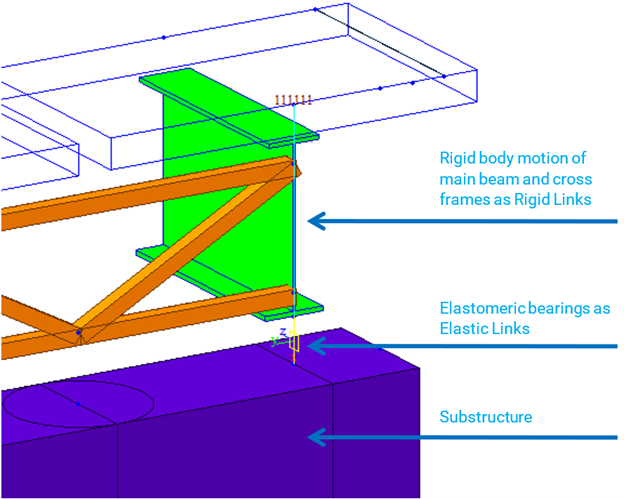 Figure 6. Usage of elastic links and other elements in MIDAS CIVIL for structural elastomeric bearing connection
Figure 6. Usage of elastic links and other elements in MIDAS CIVIL for structural elastomeric bearing connection
- According to the engineer’s approach and criteria, bearings are sometimes defined using zero rotational or even translational stiffness values. Care must be taken when freeing degrees of freedom in the numerical model because all models need to guarantee both global and local forces equilibrium. Otherwise, the program may fail to converge in the structural analysis, or it may even converge but with erroneous structural response values.
- In MIDAS CIVIL, the Elastic Link’s results (forces and deformations) properly combined with Load Combinations can be directly considered as the input for the separate design of the elastomeric bearings that should be conducted by the engineer.
References
- American Iron and Steel Institute/ National Steel Bridge Alliance (AISI/NSBA) (1996). “Steel Bridge Bearing Selection and Design Guide,” Highway Structures Design Handbook, Volume II, Chapter 4.
- Akogul and Celik (2008). Effect of elastomeric bearing on the seismic design of RC highway bridges with precast concrete girders.
- Australian Standard AS 5100.4:2017. Bridge design. Part 4: Bearings and deck joints.
- Dacheng Rubber Co., Ltd. Catalog:
 Get Started midas Civil
Get Started midas Civil
 Featured blog of this week
Featured blog of this week










/13.%20Rail%20Structure%20Interaction/Figure/%EB%A7%9E%EC%B6%A4%ED%98%95%20%ED%81%AC%EA%B8%B0%20%E2%80%93%201.png)
/345%20240/Application%20of%20Links%20in%20Bridge%20FE%20Models.png)